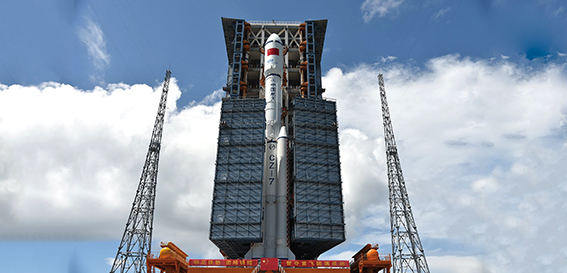China achieved a record number of space launches in 2016, completing 20 successful civil and military launches during the year, compared with the previous best total of 19 launches in 2015. India peformed seven successful launches, two more than the previous year, according to the annual review of launch activity worldwide, published by our sister magazine Air&Cosmos.
The Chinese total could have been even higher, if the 31st August launch of a Long March 4C had been successful and if the scheduled end-December launch of the Kuaizhou light launcher had not slipped into January. China plans 30 launches for the coming year. The last launch of the year, a Long March 2D on 28th December, was a partial failure, since the Earth observation payload failed to reach its intended orbit.
HIghlights of the year for China included the introduction of two new launch vehicles, Long March 5 and Long March 7, and a resumption of manned spaceflight activity, with the entry into service of the Tiangong 2 orbital laboratory which was occupied for one month by two Chinese astronauts.
Europe maintained the same pace as in 2015, with seven flights of Ariane 5, two Vega launches and two Soyuz launches from Kourou. Ariane 5 established a new record for the number of consecutive successful launches (74, now 76) and set a new payload record for a GTO mission (10.7t). Arianespace retained its leading position on the commercial launch market
2016 was a black year for Russia, which logged nine fewer launches than the 27 achieved in 2015. The year got off to a good start, with the launch of Europe’s ExoMars mission on 14th March and the inauguration of the new Vostochny cosmodrome on 28th April. However, the Proton launch failure on 9th June due to the premature shutdown of a second stage engine marked the end of satellite launch activity for the year. All subsequent launches were to the ISS.
The late-December launch of EchoSat 21 was postponed for additional checks and is not now expected before the end of January. The year finished with the loss of a Progress cargo vessel six minutes into a flight to the ISS.
Turning to the U.S., despite the explosion of a Falcon 9 on the launch pad in September, The SpaceX launcher flew as many missions as the Atlas 5 or China’s Long March 2 – though well below the planned total of 18. ULA performed 12 of the 22 successful U.S. missions during the year.
Japan performed four successful launches (two H2As, one H2B and one Epsilon 2), the same number of flights as the previous year.

